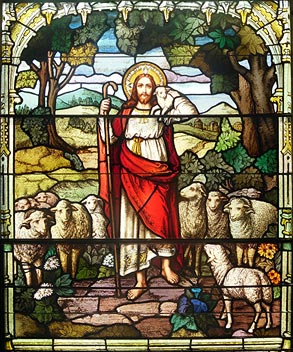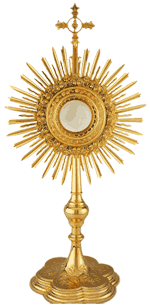 While they were eating, He took bread, said the blessing, broke it, and gave it to them, and said, “Take it; this is my body.” Then He took a cup, gave thanks, and gave it to them, and they all drank from it. He said to them, “This is my blood of the covenant, which will be shed for many.” (Mk 14:22-24)
While they were eating, He took bread, said the blessing, broke it, and gave it to them, and said, “Take it; this is my body.” Then He took a cup, gave thanks, and gave it to them, and they all drank from it. He said to them, “This is my blood of the covenant, which will be shed for many.” (Mk 14:22-24)
Today’s Solemnity of the Body and Blood of Christ (“Corpus Christi” in Latin) is a fairly recent addition to the Church calendar, dating from only the 13th century. We know that the Body and Blood of Christ are present at every Mass, but this special feast to honor the Body and Blood of Christ owes its existence to the petitions of a Belgium nun named Juliana of Liège from the 13th century. From a young age, Juliana had a great love for the Blessed Sacrament and longed for a special feast in its honor. Her desire was increased by a vision she had of the Church under the appearance of the full moon having one dark spot. The spot signified the absence of a day specifically honoring the Blessed Sacrament. In 1208 Juliana also had a vision of Christ in which He instructed her to institute the Feast of Corpus Christi. The vision was repeated for the next 20 years, but she kept it a secret. When she finally told her confessor, he relayed it to the Bishop of Liège, who subsequently convened a synod in 1246 and ordered a Corpus Christi celebration to be held each year.
The celebration of Corpus Christi didn’t became universal until 1263 when Pope Urban IV (himself also from Liège) investigated claims of a Eucharistic miracle at Bolsena, Italy where a consecrated host had bled. In 1264 he issued a papal bull making Corpus Christi a feast throughout the entire Latin Rite. Corpus Christi was the very first papally sanctioned universal feast in the history of the Latin Rite.
While the institution of the Eucharist is celebrated on Holy Thursday, that particular liturgy also commemorates the washing of the apostles’ feet, the institution of the priesthood and the agony in the Garden of Gethsemane. Corpus Christi was established to be specifically focused on the Holy Eucharist.
A new liturgy for Corpus Christi was composed by St. Thomas Aquinas. Included in the new liturgy were the Pange Lingua, is also used on Holy Thursday during the procession of the Blessed Sacrament to the altar of repose. The last two verses of Pange Lingua are also used as a separate hymn, Tantum Ergo, which is sung at Benediction of the Blessed Sacrament along with O Salutaris Hostia, the last two verses of Verbum Supernum Prodiens, Aquinas’ hymn for Lauds of Corpus Christi. Aquinas also composed the propers for the Mass of Corpus Christi, including the sequence Lauda Sion Salvatorem, which we sing today.
So we thank Holy Mother Church for the great feast we celebrate today. It’s a feast where Jesus feeds us Himself. Our Lord – the living bread whom we worship – becomes our food.

(Rev. Msgr.) Christopher H. Nalty
msgr.nalty@gmail.com




